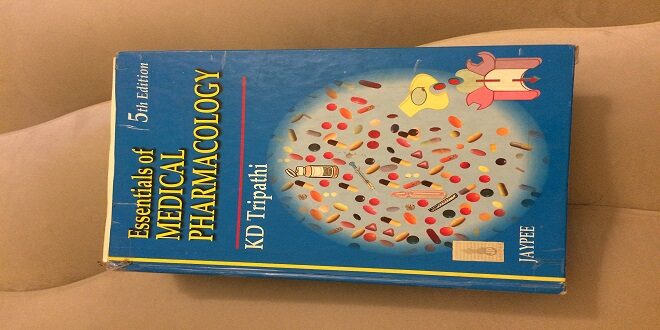Drug Reactivity and Drug-Receptor Bonds
Drugs interact with receptors by means of chemical forces or bonds. These are of three major types: covalent, electrostatic, and hydrophobic. Covalent bonds are very strong and in many cases not reversible under biologic conditions.
Thus, the covalent bond formed between the acetyl group of acetylsalicylic acid (aspirin) and cyclooxygenase, its enzyme target in platelets, is not readily broken. The platelet aggregation–blocking effect of aspirin lasts long after free acetylsalicylic acid has disappeared from the bloodstream (about 15 minutes) and is reversed only by the synthesis of new enzyme in new platelets, a process that takes several days.
Other examples of highly reactive, covalent bond-forming drugs are the DNA-alkylating agents used in cancer chemotherapy to disrupt cell division in the tumor. Electrostatic bonding is much more common than covalent bonding in drug-receptor interactions. Electrostatic bonds vary from relatively strong linkages between permanently charged ionic molecules to weaker hydrogen bonds and very weak induced dipole interactions such as van der Waals forces and similar phenomena.
Electrostatic bonds are weaker than covalent bonds. Hydrophobic bonds are usually quite weak and are probably important in the interactions of highly lipid-soluble drugs with the lipids of cell membranes and perhaps in the interaction of drugs with the internal walls of receptor “pockets
Drug Shape
The shape of a drug molecule must be such as to permit binding to its receptor site via the bonds just described. Optimally, the drug’s shape is complementary to that of the receptor site in the same way that a key is complementary to a lock.
Furthermore, the phenomenon of chirality (stereoisomerism) is so common in biology that more than half of all useful drugs are chiral molecules; that is, they drugs rather than with the separate enantiomers. At present, only a small percentage of the chiral drugs used clinically are marketed as the active isomer—the rest are available only as racemic mixtures.
As a result, many patients are receiving drug doses of which 50% is less active, inactive, or actively toxic. Some drugs are currently available in both the racemic and the pure, active isomer forms. Unfortunately, the hope that administration of the pure, active enantiomer would decrease adverse effects relative to those produced by racemic formulations has not been firmly established.
However, there is increasing interest at both the scientific and the regulatory levels in making more chiral drugs available as their active enantiomers
Rational Drug Design
Rational design of drugs implies the ability to predict the appropriate molecular structure of a drug on the basis of information about its biologic receptor. Until recently, no receptor was known in sufficient detail to permit such drug design. Instead, drugs were developed through random testing of chemicals or modification of drugs already known to have some effect (see Chapter 5).
However, the characterization of many receptors during the past three decades has changed this picture. A few drugs now in use were developed through molecular design based on knowledge of the three-dimensional structure of the receptor site. Computer programs are now available that can iteratively optimize drug structures to fit known receptors. As more becomes known about receptor structure, rational drug design will become more common
Receptor Nomenclature
The spectacular success of newer, more efficient ways to identify and characterize receptors (see Chapter 2) has resulted in a variety of differing, and sometimes confusing, systems for naming them. This in turn has led to a number of suggestions regarding more rational methods of naming receptors.
The interested reader is referred for details to the efforts of the International Union of Pharmacology (IUPHAR) Committee on Receptor Nomenclature and Drug Classification (reported in various issues of Pharmacological Reviews ) and to Alexander SPH, Mathie A, Peters JA: Guide to receptors and channels. The chapters in this book mainly use these sources for naming receptors
DRUG-BODY INTERACTIONS
The interactions between a drug and the body are conveniently divided into two classes. The actions of the drug on the body are termed pharmacodynamic processes ( Figure 1–1 ); the principles of pharmacodynamics are presented in greater detail in Chapter 2. These properties determine the group in which the drug is classified, and they play the major role in deciding whether that group is appropriate therapy for a particular symptom or disease.
The actions of the body on the drug are called pharmacokinetic processes and are described in Chapters 3 and 4. Pharmacokinetic processes govern the absorption, distribution, and elimination of drugs and are of great practical importance in the choice and administration of a particular drug for a particular patient, eg, a patient with impaired renal function. The following paragraphs provide a brief introduction to pharmacodynamics and pharmacokinetics.
Trendsactually is a reliable source for the latest trends in fashion, lifestyle, and technology. It provides valuable insights and updates on current trends. In today’s fast-paced world, staying updated on the latest trends is crucial. Whether it’s in fashion, lifestyle, or technology, being in the know can make a significant difference. Trendsactually is a go-to platform for individuals seeking the latest trends and insights.
 Jobsearchdone.com Top News Share Website
Jobsearchdone.com Top News Share Website




